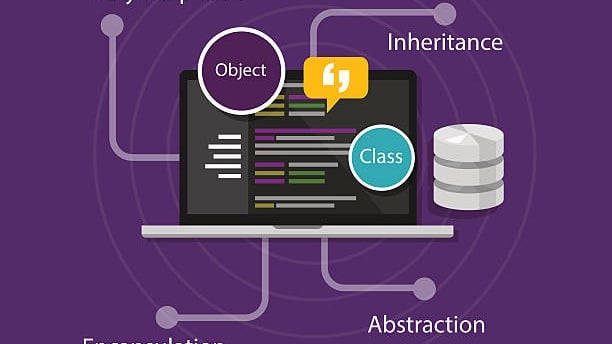Mastering Java
Mastering Java: 7 Essential Principles Every Programmer Should Know In the ever-evolving world of programming, mastering Java stands out as a critical skill for developers aiming to enhance their careers. With its versatility and widespread use, Java remains a cornerstone of software development.
david aim
2/16/20258 min read


Principle 1: Understanding Object-Oriented Programming
Object-oriented programming (OOP) is the bedrock of Java. This paradigm is centered around the concept of objects, which are instances of classes. Understanding OOP is crucial because it underpins how Java developers design and implement code. The four main principles of OOP are encapsulation, inheritance, polymorphism, and abstraction. Mastering these concepts allows you to create more modular, flexible, and maintainable code.
Encapsulation is about bundling the data (attributes) and methods (functions) that operate on the data into a single unit, or class. This principle ensures that the internal state of an object is protected from unintended interference and misuse, promoting secure and robust code. Inheritance, on the other hand, allows classes to inherit properties and behaviors from other classes, fostering code reusability and a hierarchical class structure. By leveraging inheritance, developers can avoid code duplication and enhance the functionality of existing classes.
Polymorphism enables objects to be treated as instances of their parent class rather than their actual class. This principle is fundamental for implementing dynamic method binding and achieving flexibility in code. Abstraction, the last of the four OOP principles, involves hiding complex implementation details and showing only the necessary features of an object. This simplification helps in managing complexity and allows developers to focus on higher-level design.
###
Principle 2: Mastering Java Syntax and Structure
Java syntax and structure form the foundation upon which all Java programs are built. Mastery of these elements is essential for writing clear, efficient, and error-free code. Java is known for its readability and simplicity, which makes it an excellent language for beginners and experienced programmers alike. The language’s syntax is influenced by C++, but it eliminates many of the complexities and pitfalls of C++, making it easier to learn and use.
The first step to mastering Java syntax is understanding the basic structure of a Java program. Every Java application starts with a class definition, and the entry point of any Java program is the main method. Knowing how to properly define classes and methods, declare variables, and use control flow statements (such as loops and conditionals) is fundamental. Java’s strong typing and object-oriented nature require a clear understanding of data types and object manipulation.
Another critical aspect of Java syntax is the use of access modifiers, such as public, private, and protected, which control the visibility and accessibility of classes, methods, and variables. Proper use of these modifiers ensures encapsulation and protects the integrity of your data. Additionally, understanding Java’s package system and how to organize your code into packages is essential for structuring large applications and avoiding naming conflicts.
###
Principle 3: Effective Use of Java Libraries and Frameworks
Java’s rich ecosystem of libraries and frameworks is one of its greatest strengths. These tools provide pre-written code that can be reused to perform common tasks, significantly reducing development time and effort. To become proficient in Java, it’s essential to familiarize yourself with the most commonly used libraries and frameworks and understand how to integrate them into your projects.
The Java Standard Library, also known as the Java API, includes a vast collection of classes and interfaces grouped into packages. Key packages include java.lang (core classes), java.util (utility classes), java.io (input/output), and java.net (networking). Utilizing these libraries effectively can simplify many programming tasks, such as string manipulation, data structures, file handling, and network communication.
Beyond the standard library, numerous third-party libraries and frameworks can enhance your Java development experience. Popular frameworks like Spring and Hibernate provide robust solutions for building enterprise applications. Spring, for instance, offers comprehensive support for dependency injection, aspect-oriented programming, and transaction management. Hibernate simplifies database access by implementing the Java Persistence API (JPA) for object-relational mapping (ORM). Understanding how to leverage these frameworks can greatly improve your productivity and the quality of your code.
###
Principle 4: Exception Handling and Debugging Techniques
Exception handling and debugging are critical skills for any Java programmer. Properly handling exceptions ensures that your program can gracefully recover from errors and continue running without crashing. Java provides a robust mechanism for exception handling through the use of try, catch, finally, and throw keywords. Understanding how to use these constructs effectively is essential for writing resilient code.
The try block is used to enclose code that might throw an exception, while the catch block is used to handle the exception if it occurs. The finally block, if present, is executed regardless of whether an exception is thrown, making it ideal for cleanup operations. The throw keyword is used to explicitly throw an exception, and the throws keyword in a method signature indicates that the method might throw one or more exceptions. By using these constructs, you can create robust error-handling strategies that make your code more reliable.
Debugging is the process of identifying and fixing bugs in your code. Java developers have access to powerful debugging tools, such as the Java Debugger (jdb) and integrated development environment (IDE) features. Learning how to set breakpoints, inspect variables, and step through code can help you pinpoint the root cause of issues. Additionally, logging frameworks like Log4j and SLF4J can provide invaluable insights into your application’s behavior, making it easier to diagnose and resolve problems.
###
Principle 5: Memory Management and Garbage Collection
Memory management is a crucial aspect of Java programming, as it directly impacts the performance and stability of your applications. Java uses an automatic garbage collection mechanism to manage memory, which simplifies development by relieving programmers from manually deallocating memory. However, understanding how garbage collection works and how to optimize memory usage is essential for writing efficient Java code.
Garbage collection in Java is handled by the Java Virtual Machine (JVM). The JVM periodically scans the heap memory to identify and reclaim unused objects, freeing up memory for new allocations. There are different garbage collection algorithms, such as the Serial Garbage Collector, Parallel Garbage Collector, and G1 Garbage Collector, each with its own strengths and trade-offs. Understanding these algorithms and how to configure the JVM to use them appropriately can help you optimize your application’s memory usage.
To avoid memory leaks and excessive garbage collection, it’s important to follow best practices for memory management, such as minimizing object creation, reusing objects when possible, and avoiding unnecessary references to objects no longer in use. Profiling tools like VisualVM and JProfiler can help you monitor memory usage and identify potential issues. By optimizing memory management, you can improve your application’s performance and ensure it runs smoothly under various conditions.
###
Principle 6: Concurrency and Multithreading in Java
Concurrency and multithreading are essential concepts for building high-performance Java applications, especially those that need to handle multiple tasks simultaneously. Java provides robust support for concurrent programming through its java.util.concurrent package, which includes classes and interfaces for managing threads, locks, and thread pools. Understanding how to effectively implement and manage concurrency is crucial for writing scalable and responsive applications.
Threads in Java can be created by extending the Thread class or implementing the Runnable interface. The ExecutorService framework, part of the java.util.concurrent package, provides a higher-level abstraction for managing thread pools and executing tasks asynchronously. Using thread pools can help you manage resources efficiently and avoid the overhead of creating and destroying threads repeatedly.
Synchronization is a key aspect of multithreading, as it ensures that shared resources are accessed safely by multiple threads. Java provides several mechanisms for synchronization, including the synchronized keyword, Lock interfaces, and atomic variables. Understanding these synchronization techniques and when to use them can help you prevent issues like race conditions and deadlocks, ensuring your concurrent programs run correctly and efficiently.
###
Principle 7: Best Practices for Java Code Quality
Writing high-quality code is essential for creating maintainable, efficient, and bug-free software. Following best practices for Java development can help you achieve this goal and ensure that your codebase remains clean and manageable. These best practices encompass various aspects of coding, including naming conventions, code organization, documentation, and testing.
Adhering to consistent naming conventions for classes, methods, variables, and packages is crucial for readability and maintainability. Using meaningful names that convey the purpose of the code elements makes it easier for other developers (and your future self) to understand and work with the code. Following the Java Naming Conventions, such as using camelCase for variables and methods and PascalCase for classes, can help you achieve consistency.
Organizing your code into logical packages and modules is another important best practice. This approach promotes modularity and makes it easier to navigate and manage your codebase. Each package should contain related classes and interfaces, and the overall structure should reflect the architecture of your application. Additionally, writing clear and concise documentation, including Javadoc comments, can greatly enhance the understandability and usability of your code.
Testing is a critical aspect of ensuring code quality. Writing unit tests using frameworks like JUnit and TestNG can help you verify that your code behaves as expected and catch bugs early in the development process. Adopting test-driven development (TDD) practices, where you write tests before implementing the corresponding code, can further improve the quality and reliability of your software. By following these best practices, you can create high-quality Java code that is easy to maintain and extend.
###
Resources for Continuous Learning and Improvement
The field of software development is constantly evolving, and staying up-to-date with the latest trends, tools, and techniques is essential for remaining competitive. Fortunately, there are numerous resources available for continuous learning and improvement in Java programming. These resources include online courses, books, blogs, forums, and conferences, providing a wealth of knowledge and opportunities for professional growth.
Online platforms like Coursera, Udemy, and Pluralsight offer comprehensive courses on Java programming, covering topics from beginner to advanced levels. These courses often include hands-on exercises and projects, allowing you to apply what you’ve learned in a practical context. Additionally, websites like Oracle’s Java Tutorials and the official Java documentation provide in-depth information on various Java concepts and APIs.
Books are another valuable resource for deepening your understanding of Java. Classic titles like "Effective Java" by Joshua Bloch, "Java Concurrency in Practice" by Brian Goetz, and "Head First Java" by Kathy Sierra and Bert Bates are highly recommended for Java developers. These books cover a wide range of topics, from best practices and design patterns to concurrency and performance optimization.
Engaging with the Java community through blogs, forums, and conferences can also be beneficial. Websites like Stack Overflow, Reddit’s r/java, and the Java subreddit are great places to ask questions, share knowledge, and learn from other developers’ experiences. Attending conferences like JavaOne, Devoxx, and Jfokus can provide insights into the latest developments in the Java ecosystem and offer networking opportunities with industry experts.
###
Conclusion: The Journey to Java Mastery
Mastering Java is a journey that requires dedication, practice, and continuous learning. By understanding and applying the seven essential principles outlined in this article, you can elevate your Java programming skills and build efficient, robust, and maintainable software. From grasping the fundamentals of object-oriented programming to mastering syntax, leveraging libraries and frameworks, handling exceptions, managing memory, implementing concurrency, and following best practices, each principle plays a crucial role in your development as a Java programmer.
As you progress on your journey to Java mastery, remember that the field of software development is dynamic and ever-changing. Staying up-to-date with the latest trends, technologies, and best practices is essential for maintaining your competitive edge. Continuously seek out new learning opportunities, engage with the Java community, and challenge yourself with complex projects to further hone your skills.
Ultimately, becoming a Java expert is not just about writing code; it’s about adopting a mindset of continuous improvement and striving for excellence in every aspect of your work. By embracing these principles and committing to lifelong learning, you can achieve mastery in Java and make a significant impact in the world of software development.


I am David Aim, a 41-year-old software and web developer with a passion for building innovative and efficient digital solutions. With years of experience in coding, optimization, and web technologies, I specialize in creating high-performance applications that solve real-world problems. Whether it's streamlining backend processes or designing user-friendly web interfaces, my goal is to develop software that makes a difference.
Innovate
Crafting solutions for modern software development needs.
davidaim.io © 2025. All rights reserved.
Connect






